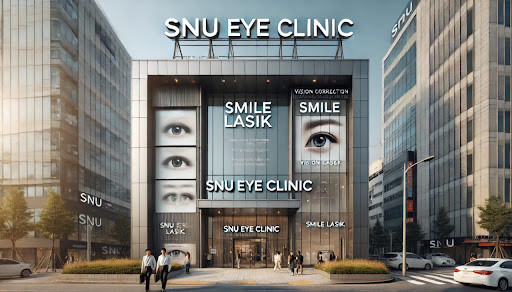In the ever-evolving field of ophthalmology, LASIK surgery stands out as one of the most transformative advancements in vision correction. Since its approval by the FDA in the 1990s, LASIK (Laser-Assisted In Situ Keratomileusis) has helped millions of people achieve clearer vision—often without the need for glasses or contact lenses what is prk surgery snu eye clinic .
As technology and surgical techniques continue to advance, LASIK has become safer, more precise, and more accessible than ever. In this article, we explore how LASIK has revolutionized modern eye care, its benefits, the procedure itself, and who makes an ideal candidate.

What Is LASIK Surgery?
LASIK is a refractive eye surgery that corrects common vision problems such as:
- Myopia (nearsightedness)
- Hyperopia (farsightedness)
- Astigmatism (irregular curvature of the cornea)
These conditions occur when light entering the eye is not properly focused on the retina. LASIK reshapes the cornea—the clear, dome-shaped surface at the front of the eye—to improve the way light rays are refracted, or bent, thereby enhancing focus and vision clarity.
How the LASIK Procedure Works
The LASIK procedure is typically quick and relatively painless. It is usually performed on an outpatient basis and takes less than 30 minutes for both eyes. Here’s a breakdown of the process:
1. Pre-Surgical Mapping
Before surgery, the ophthalmologist conducts a comprehensive eye exam and creates a detailed map of the cornea using wavefront technology. This custom blueprint guides the laser treatment.
2. Creating the Corneal Flap
A thin flap is created on the cornea’s surface using a microkeratome blade or a femtosecond laser. This flap is gently lifted to expose the underlying corneal tissue.
3. Reshaping the Cornea
An excimer laser precisely removes microscopic amounts of corneal tissue based on the patient’s prescription. This reshaping corrects the way light is focused on the retina.
4. Flap Repositioning
The flap is laid back down, where it naturally adheres without stitches. Healing begins immediately.
Most patients notice improved vision within 24 hours, and the recovery process is generally smooth with minimal discomfort.
Benefits of LASIK Surgery
LASIK offers a range of life-changing benefits for eligible patients:
1. Rapid Vision Improvement
Many patients achieve 20/20 vision or better the day after surgery. Full visual stabilization usually occurs within a few weeks.
2. Freedom from Glasses or Contacts
LASIK eliminates or greatly reduces dependence on corrective lenses, making everyday activities more convenient.
3. Long-Lasting Results
While normal age-related vision changes (like presbyopia) can still occur, the core vision correction achieved through LASIK is typically permanent.
4. High Safety and Success Rates
LASIK is one of the most studied and refined surgeries in medicine. With a satisfaction rate exceeding 95%, it’s considered both safe and effective when performed by experienced surgeons.
5. Minimal Downtime
Patients often return to work and normal activities within 1–2 days, making LASIK a low-disruption procedure.
Advances in LASIK Technology
Modern LASIK has come a long way from its early days. Some key innovations include:
- Wavefront-Guided LASIK: Customizes treatment based on the unique imperfections in each person’s eye, offering better outcomes and fewer night vision issues.
- Femtosecond Laser Flap Creation: Enhances precision and reduces risks associated with mechanical blades.
- Topography-Guided LASIK: Analyzes the corneal surface in even greater detail, improving results for patients with irregular corneas.
These advancements have made LASIK more accurate, customizable, and safe for a broader range of patients.
Who Is a Good Candidate for LASIK?
While LASIK has helped millions, it isn’t suitable for everyone. Ideal candidates typically:
- Are over 18 years old
- Have stable vision prescription for at least one year
- Have healthy corneas and no history of eye disease
- Are not pregnant or breastfeeding
- Do not have autoimmune disorders that impair healing
A thorough preoperative evaluation is essential to determine eligibility. Patients with thin corneas, severe dry eye, or irregular corneal shape may be better suited for alternative procedures like PRK or SMILE.
Risks and Considerations
Though LASIK is generally safe, like all surgeries, it carries some risks:
- Dry eyes: Temporary or, in rare cases, chronic dryness
- Night vision issues: Such as glare or halos, especially in low-light conditions
- Undercorrection or overcorrection: May require a second procedure
- Flap complications: Although rare with modern techniques
Discussing these risks openly with a qualified ophthalmologist helps set realistic expectations and ensures informed decision-making.
LASIK vs. Other Vision Correction Procedures
LASIK is not the only option for surgical vision correction. Depending on the patient’s unique eye structure and health, other procedures may be recommended:
- PRK (Photorefractive Keratectomy): No flap; ideal for patients with thin corneas
- SMILE (Small Incision Lenticule Extraction): Minimally invasive, suitable for mild to moderate myopia
- Implantable Collamer Lenses (ICLs): Involves placing a lens inside the eye; reversible option for certain patients
Each method has its pros and cons, and the right choice depends on individual needs and goals.
Final Thoughts
LASIK has undeniably revolutionized the field of vision correction. With its fast recovery, lasting results, and high satisfaction rate, it offers a powerful solution for people tired of relying on glasses or contact lenses. As technology continues to evolve, LASIK and similar procedures will only become more precise, safer, and more widely accessible.
If you’re considering LASIK, consult a board-certified ophthalmologist or refractive surgeon to determine if you’re a candidate. A personalized evaluation is the first step toward clearer, more liberated vision.